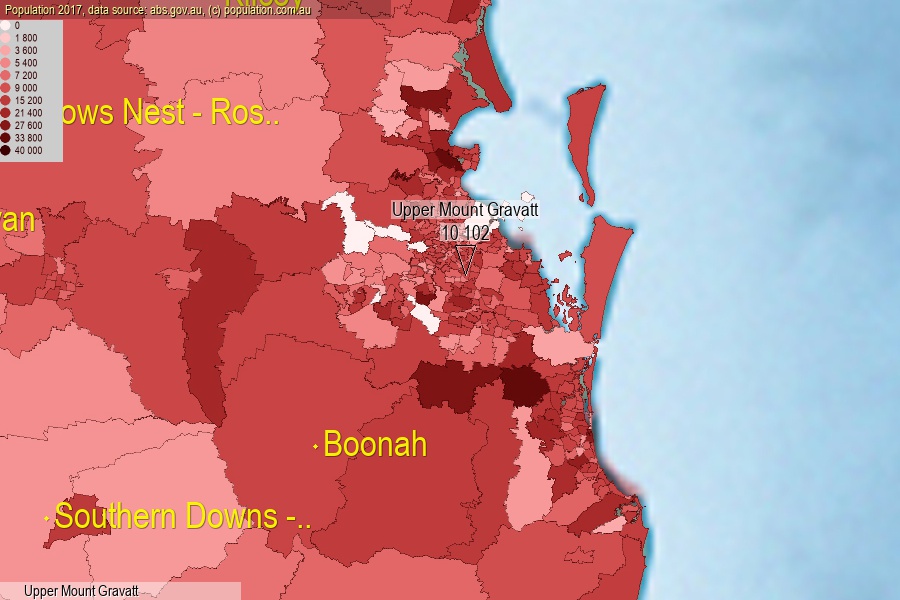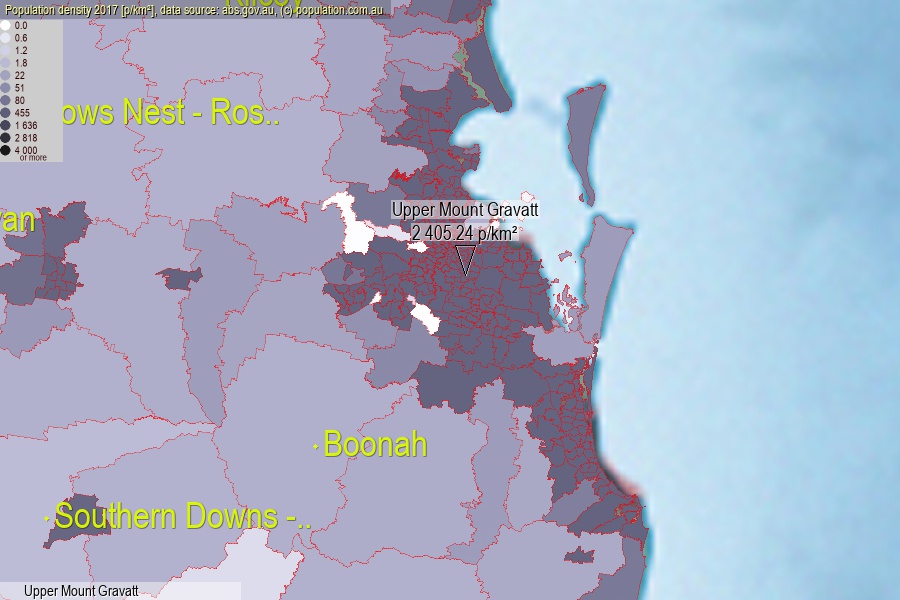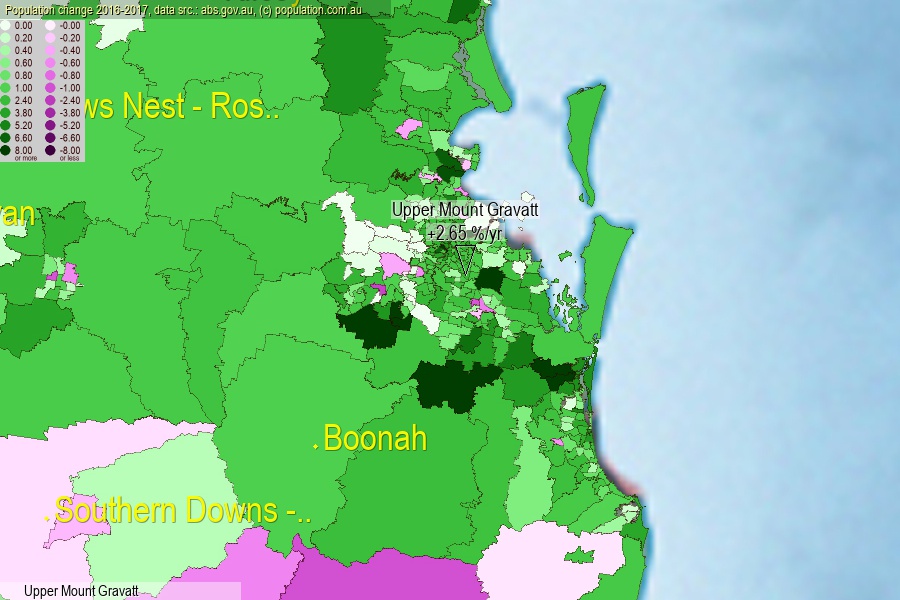 population.com.au
population.com.auLast official estimated population of Upper Mount Gravatt (as Statistical Area Level 2) was 10 102 people (on 2017-06-30)[2]. This was 0.04% of total Australian population and 0.202% of QLD population. Area of Upper Mount Gravatt is 4.20 km², in this year population density was 2 405.24 p/km² . If population growth rate would be same as in period 2016-2017 (+2.65%/yr), Upper Mount Gravatt population in 2025 would be 12 455. [0]



Click to enlarge. Upper Mount Gravatt is located in the center of the images.
Population [people], population density [p./km²] and population change [%/year] [2]
View borders » (new window) [4]
[1991-1992] -1.24 %/Yr.
[1992-1993] -0.50 %/Yr.
[1993-1994] -2.07 %/Yr.
[1994-1995] -2.19 %/Yr.
[1995-1996] -1.03 %/Yr.
[1996-1997] -0.12 %/Yr.
[1997-1998] -0.07 %/Yr.
[1998-1999] +0.37 %/Yr.
[1999-2000] +0.18 %/Yr.
[2000-2001] +1.08 %/Yr.
[2001-2002] +0.43 %/Yr.
[2002-2003] +0.86 %/Yr.
[2003-2004] +0.95 %/Yr.
[2004-2005] +1.93 %/Yr.
[2005-2006] +3.69 %/Yr.
[2006-2007] +4.93 %/Yr.
[2007-2008] +2.02 %/Yr.
[2008-2009] +2.58 %/Yr.
[2009-2010] +1.88 %/Yr.
[2010-2011] +2.32 %/Yr.
[2011-2012] +0.66 %/Yr.
[2012-2013] +0.91 %/Yr.
[2013-2014] +1.25 %/Yr.
[2014-2015] +1.08 %/Yr.
[2015-2016] +1.84 %/Yr.
[2016-2017] +2.65 %/Yr.
[0] Calculated with linear interpolation from officially estimated population
[1] Read more about SA2 and Australian Statistical Geography Standard (ASGS) on abs.gov.au
[2] Population data from Australian Bureau of Statistics (Population and density: 2017; change: 2016-2017)
[3] Digital Boundaries: Australian Statistical Geography Standard (ASGS) 2016.
[4] Border coordinates are simplifyed using Ramer-Douglas-Peucker algorithm.